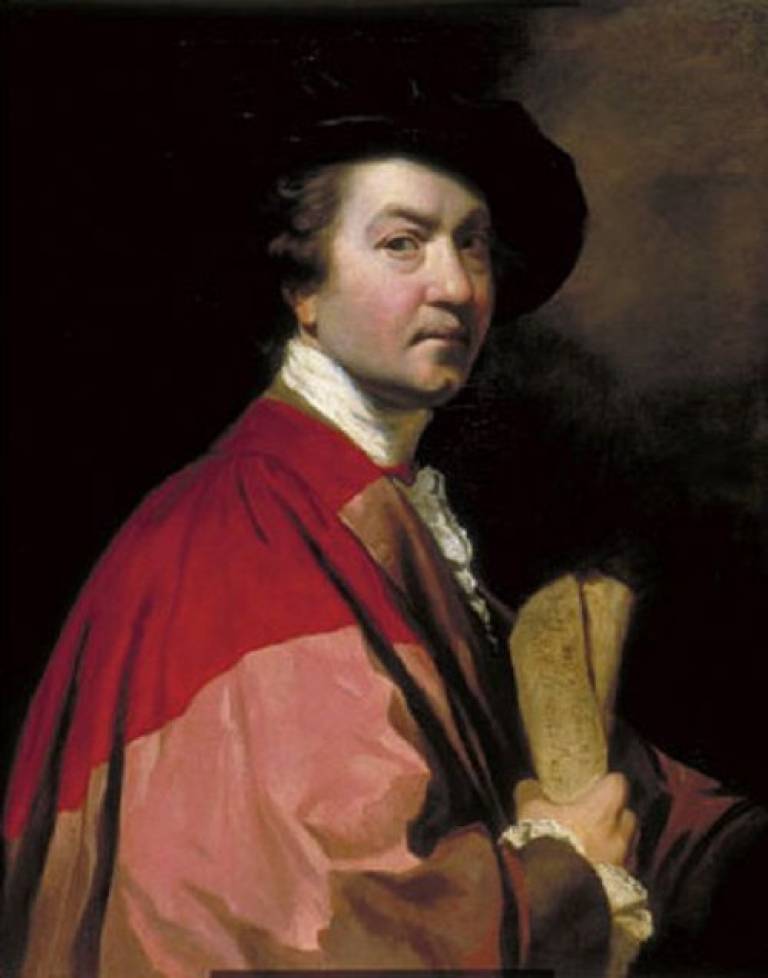Joshua Reynolds
Sir Joshua Reynolds (1723–1792)
Occupation: Painter, art theorist, and founding President of the Royal Academy of Arts
Born: July 16, 1723, Plympton, Devon, England
Died: February 23, 1792, London, England
Early Life and Education
Joshua Reynolds was the son of Reverend Samuel Reynolds, a schoolmaster. Showing an early talent for drawing, he was apprenticed in 1740 to the fashionable London portraitist Thomas Hudson, who trained him in the techniques and conventions of contemporary portrait painting. After completing his apprenticeship, Reynolds returned to Devon to establish his own practice.
Grand Tour and Artistic Development
In 1749, Reynolds accompanied Commodore Augustus Keppel on a voyage to the Mediterranean, which allowed him to spend nearly three years in Italy—primarily in Rome. This experience profoundly shaped his artistic philosophy. He studied the works of Raphael, Michelangelo, and other Renaissance masters, developing a belief that great art should aspire to the ideal and the heroic rather than mere imitation of nature.
Upon his return to England in 1752, he began to synthesize these classical influences with the realistic traditions of English portraiture, quickly becoming the leading portrait painter of his day.
Career and the Royal Academy
Reynolds’s portraits became synonymous with elegance and intellect. He painted prominent figures of the Georgian era—Samuel Johnson, David Garrick, Edmund Burke, and many members of the aristocracy. His portraits often featured rich color, grand poses, and a sense of moral or classical gravitas.
In 1768, Reynolds was instrumental in the founding of the Royal Academy of Arts, becoming its first President, a position he held until 1792. That same year, he was knighted by King George III—the first English painter to receive this honor.
Art Theory and the “Discourses”
Between 1769 and 1790, Reynolds delivered a series of fifteen influential lectures known as the “Discourses on Art.” These essays articulated his belief in “the Grand Style,” emphasizing the study of Old Masters, the pursuit of ideal beauty, and the elevation of painting as an intellectual endeavor.
His ideas shaped generations of artists and established the foundations of academic art theory in Britain.
Later Life and Death
In his later years, Reynolds suffered from hearing loss and declining eyesight, which eventually forced him to stop painting in 1789. He died in London on February 23, 1792, and was buried with great honor in St. Paul’s Cathedral, near his friend Sir Christopher Wren.
Legacy
Sir Joshua Reynolds remains one of the defining figures of British portraiture and art theory. His work set new standards for artistic professionalism and intellectual seriousness in English art. Together with contemporaries such as Thomas Gainsborough, he helped shape the image of 18th-century Britain.

